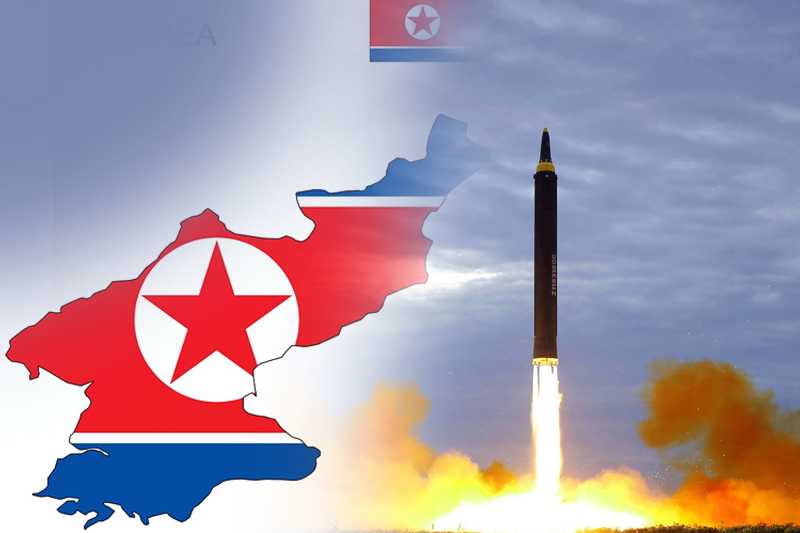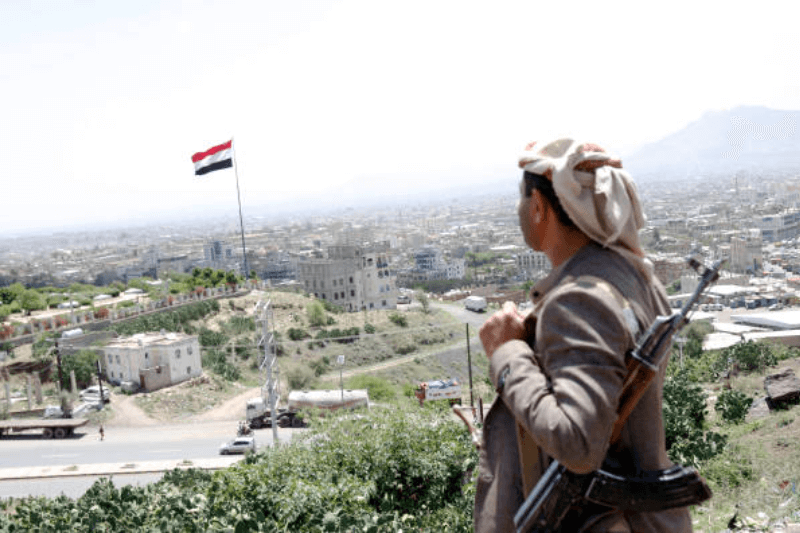
North Korea tests 2 more missiles as the United States sends a carrier
A nuclear-powered U.S. aircraft carrier and its battle group began training with South Korean warships on Monday, hours after North Korea fired two short-range ballistic missiles in what appeared to be a protest of the allies’ expanding drills.
The seventh missile test this month highlighted the escalating tensions in the area as both the North’s weapons tests and the joint military drills between the United States and South Korea have grown more intense in a cycle of tit-for-tat.
The launches may have been timed to coincide with the arrival of the USS Nimitz and its strike group, which included two destroyers, a guided missile cruiser, and air defense drills with South Korean warships in the area of Jeju Island.
The drills, according to Jang Do Young, a spokesman for the South Korean navy, were designed to hone joint operational capabilities and show that the United States is committed to defending its ally with all available means, including nuclear weapons, in the face of the North’s “escalating nuclear and missile threats.” On Tuesday, the Nimitz strike group was anticipated to touch down in the Busan port on the South Korean mainland.
The Joint Chiefs of Staff of South Korea reported that the two North Korean missiles were launched from a western inland region south of Pyongyang between 7:47 and 8 a.m. and traveled about 370 kilometers (229 miles) before touching down at sea. The missiles, which landed outside of Japan’s exclusive economic zone, were described as having flown on an irregular trajectory and reaching a maximum altitude of 50 kilometers by the Japanese military (31 miles).
A North Korean solid-fuel missile that appears to be based on Russia’s Iskander mobile ballistic system and designed to be maneuverable in low-altitude flight to better evade South Korean missile defenses has previously been described in similar terms by Japan. The U.S. MGM-140 Army Tactical Missile System is similar to another short-range system that North Korea also possesses with similar features.
Keep Reading
Hirokazu Matsuno, the chief cabinet secretary of Japan, stated that North Korea may step up its testing activity even more by launching additional missiles or even carrying out its first nuclear test since September 2017.
The militaries of South Korea and Japan condemned the most recent launches as a grave provocation endangering regional peace and said they were collaborating with the US to further examine the missiles. The launches, according to the U.S. Indo-Pacific Command, did not immediately pose a threat to the country or its allies, but they did demonstrate the “destabilizing impact” of North Korea’s illegitimate nuclear and missile programs.
The launches elicited no immediate response from North Korea, which has endured tighter U.N. Security Council sanctions since 2016 due to its nuclear development.
The largest springtime exercises between the United States and South Korea in recent memory were finished last week and included both computer simulations and live-fire field exercises. But as a show of force against the North’s escalating threats, the allies have kept up their field training.
When the USS Ronald Reagan and its battle group arrived in September for joint drills with South Korea—the last time the US sent an aircraft carrier to waters near the Korean Peninsula—North Korea had also fired a short-range missile.
To get the United States to accept its nuclear status and negotiate a lifting of sanctions from a position of strength, North Korea has launched more than 20 ballistic and cruise missiles on 11 separate occasions this year.
An intercontinental ballistic missile and several short-range missiles were tested this month in an effort by North Korea to show that it is capable of launching nuclear attacks on both South Korea and the U.S. mainland.
Last week, the North conducted what it described as a three-day exercise that mimicked nuclear attacks on targets in South Korea.
The joint military exercises between the US and South Korea have been denounced by North Korean leader Kim Jong Un as invasion practices. The exercises, according to the allies, are defensive.
The North claimed that the tests included a nuclear-capable underwater drone that could trigger a massive “radioactive tsunami” and destroy naval ships and ports. The Joint Chiefs of Staff in Seoul said in a statement on Monday that it believes the North Korean claims are likely to be “exaggerated and fabricated.” Analysts were dubious about whether such a device posed a significant new threat.
Following some of its ballistic and cruise missile tests this month, North Korea also asserted that those weapons were fitted with dummy nuclear warheads that exploded 600 to 800 meters (1,960 to 2,600 feet) above their sea targets, indicating that these were the heights that would cause the most damage.
In 2022, North Korea launched more than 70 missiles, setting a new record for weapons testing. It had enacted a nuclear doctrine that allows for pre-emptive strikes in a variety of circumstances where it might feel that its leadership is in danger.
Testing ongoingly aids Pyongyang in honing its technology.
According to Duyeon Kim, a senior analyst at the Center for a New American Security, “it appears North Korea might be practicing, or signaling that it’s practicing, the use of nuclear strikes, both preemptive and retaliatory, in a range of scenarios that are authorized in its nuclear doctrine.”
The issue is that Pyongyang’s continued testing aids in the advancement of its technology strengthens its nuclear arsenal that threatens South Korea and Japan, raises the risk of error that could result in unintended conflict, and builds political clout in advance of future negotiations with Washington.
The South Korean air force released information about a five-day joint drill with the United States last week that included live-fire demonstrations of air-to-air and air-to-ground weapons after the North announced the drone test on Friday.
To counter North Korean nuclear threats, Seoul has adopted a “three-axis” strategy that includes preemptively striking potential attack sources, intercepting incoming missiles, and neutralizing the North’s leadership and key military facilities. The air force said the exercise was intended to test precision strike capabilities and reaffirm the validity of this approach.




